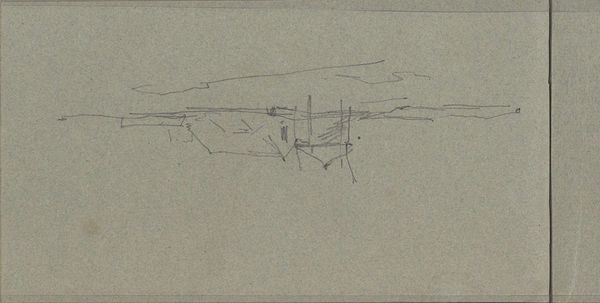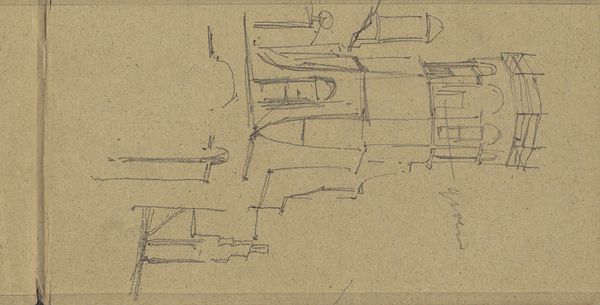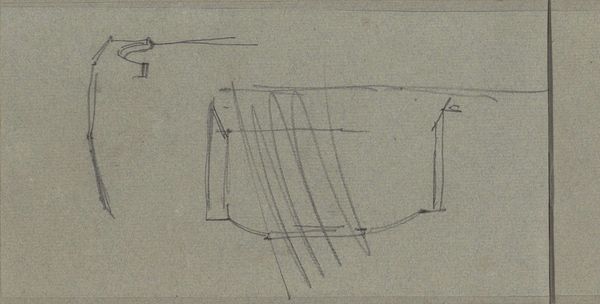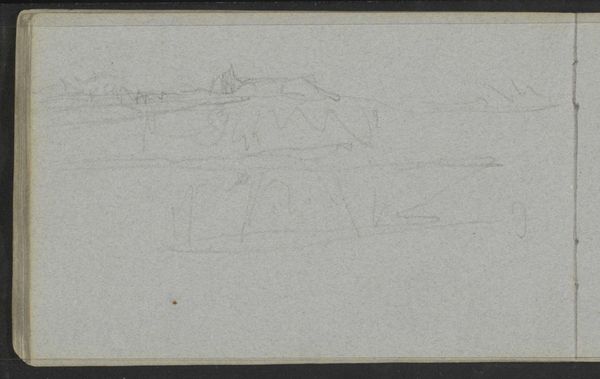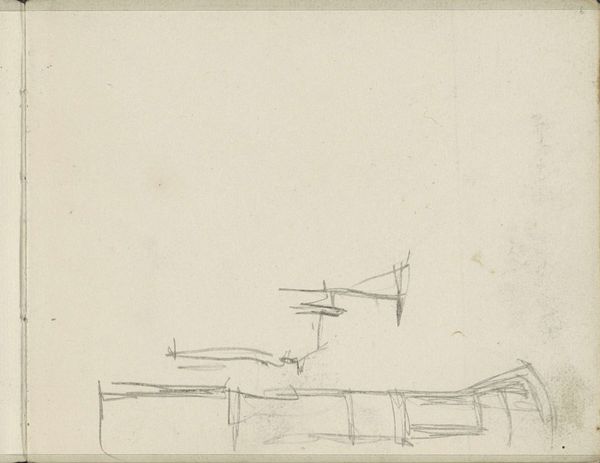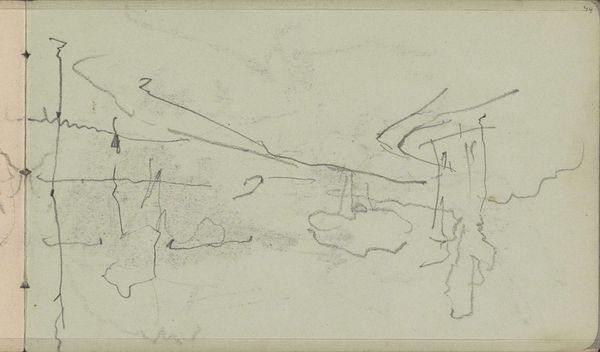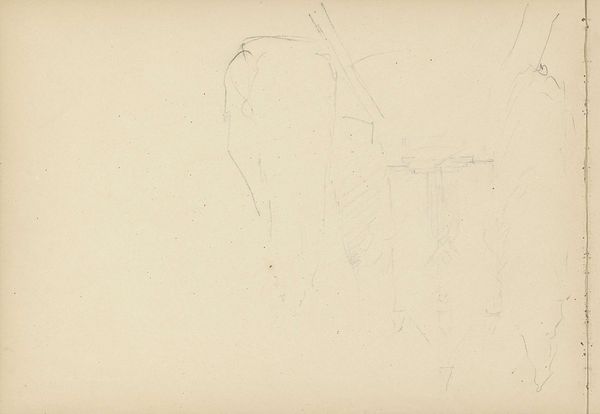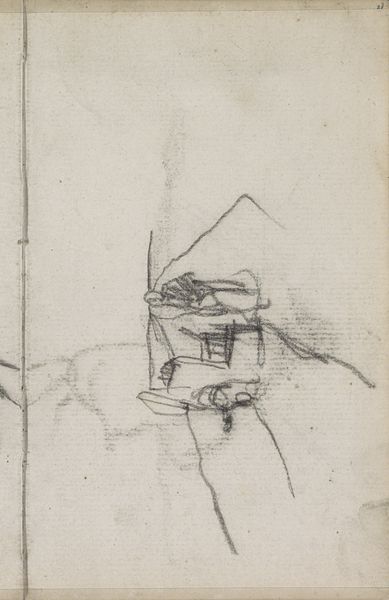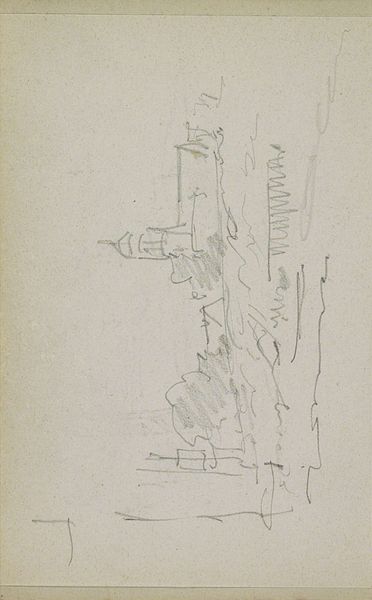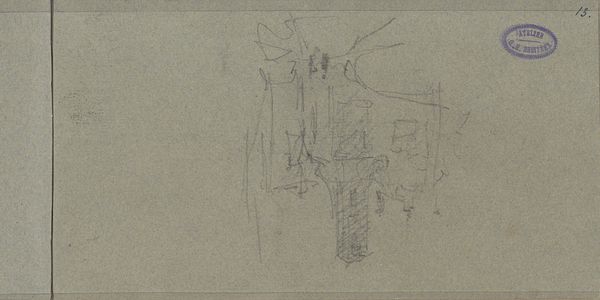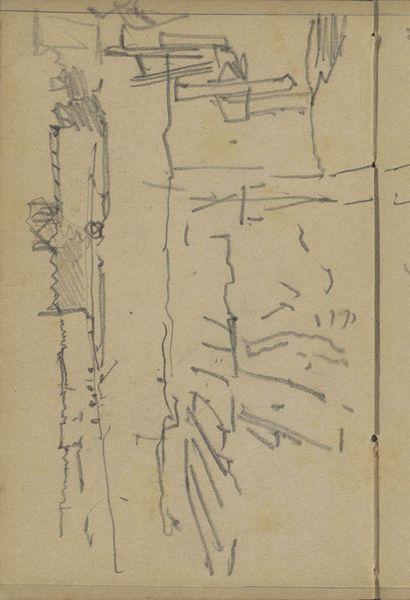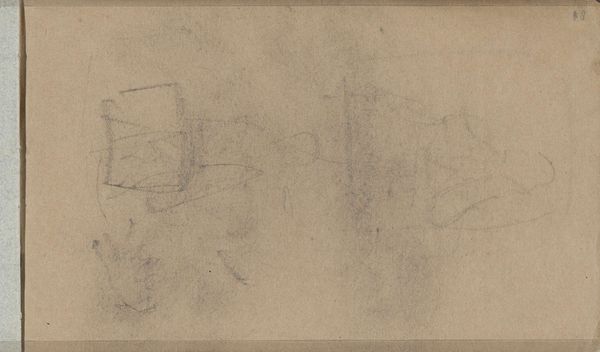
drawing, pencil, graphite
#
drawing
#
impressionism
#
landscape
#
form
#
pencil
#
line
#
graphite
#
cityscape
Copyright: Rijks Museum: Open Domain
Curator: Here we have a fascinating sketch by George Hendrik Breitner, titled "Studieblad, mogelijk met werktuigen," which translates to "Study sheet, possibly with tools," created between 1881 and 1883. Editor: My initial impression is of sparseness. The lines are so minimal, almost ghostly on the page. It feels like a fleeting thought captured quickly in graphite. Curator: Indeed. Considering Breitner’s engagement with the working class and urban development during this period in Amsterdam, we can interpret even these fragmented forms through the lens of labor and the societal transformations underway. Were these "tools" of the industrial revolution, or objects he found while observing everyday life? The ambiguity sparks questions about labor identity and place. Editor: I am compelled to focus on those tools. Breitner employed, for his creative work, materials of graphite and paper to deliver impressions of labor in Dutch society, where technological change has had a central role. It’s tempting to read the drawing itself as a depiction of industry because we see tools – albeit undefined - at work. Curator: I agree to some extent; these visual notes offer entry into imagining Breitner’s mindset, particularly how masculine roles influenced the art. Editor: And for whom was this image produced, for whom did he produce any work, as well? Curator: Yes! Questions that encourage new pathways for contextualizing his art as integral to identity politics. These small details within cityscape contexts invite conversation concerning labor's status during periods marked by fast development. Editor: It makes me want to handle Breitner's very pencil, the material link between artist and subject. To think about the factory workers whose work sustained the Dutch economy as a consequence, this adds meaning that deepens a reading for all artwork during these times of upheaval brought on new industrial innovations. Curator: Reflecting on "Studieblad" it seems Breitner captures moments and provides social commentary, that continues now – challenging viewers to actively assess their context through art! Editor: And through the lens of production; how those tools – his drawing tools - have brought us into conversations, reminding of shared human experiences regarding workmanship across eras, even.
Comments
No comments
Be the first to comment and join the conversation on the ultimate creative platform.
